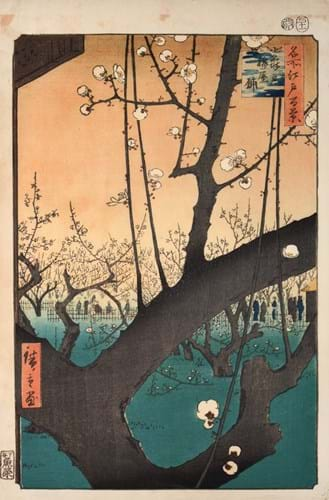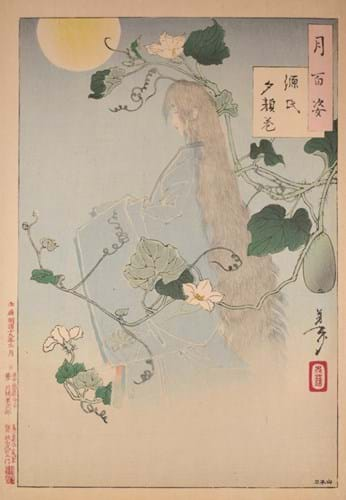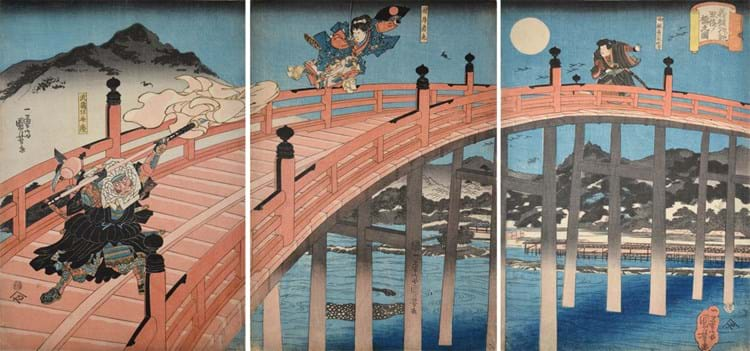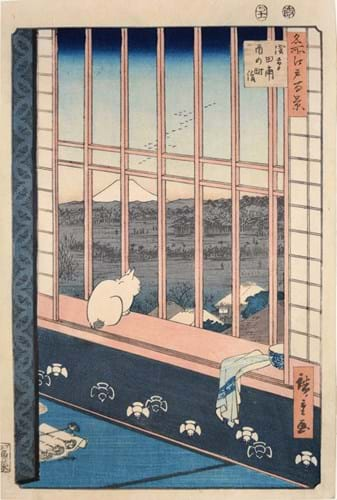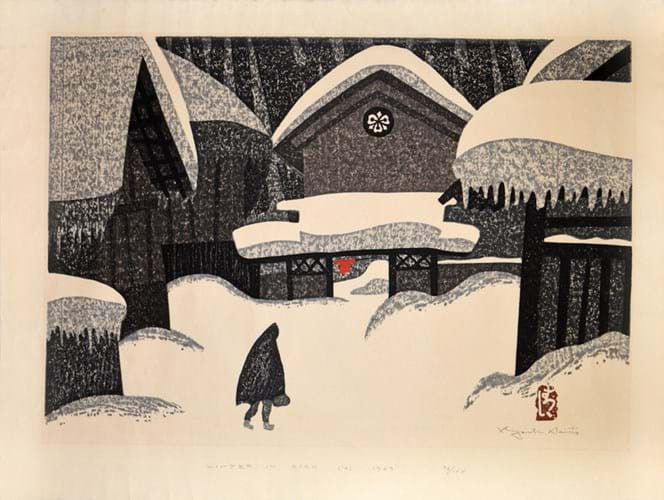Ronin Gallery, which specialises in woodblock prints, is moving to the two-level former tap room in Andrew Carnegie’s Engineer’s Club on Bryant Park. It celebrates its final days on Madison Avenue during Asia Week, when it exhibits works from across its collection.
These include landscapes of Hiroshige and Hokusai as well as legendary heroes of Kuniyoshi and Yoshitoshi. They will be specially priced for the event and will be available framed.
Here is a selection of the works on offer.
Hiroshige
Hiroshige (1797-1858) is well known for his vertical-format landscapes such as this woodblock print Plum Garden at Kameido (1857). It is from his One Hundred Famous Views of Edo, which depicts views of places around modern day Tokyo. It shows the famous Sleeping Dragon Plum, the most famous tree in Edo, in a unique abstract composition.
Yoshitoshi
This woodblock print, Yugao Chapter from the Tale of Genji (1886), is by Yoshitoshi (1839-92), who is considered one of the last great masters of ukiyo-e. Murasaki Shikibu’s Tale of Gengi follows the romantic adventures of a handsome prince and this image depicts his mysterious lover who is killed by the jealous spirit of one of his past conquests. Yugao is shown as a wistful ghost.
Kuniyoshi
Ushiwaka-maru and Benkei on Gojo Bridge is a c.1840 scene by Kuniyoshi (1979-1861) from the Life of Yoshitsune series. Kuniyoshi worked in all genres producing landscapes, dramatic images of heroes and bijin-ga or pictures of beautiful women.
Hiroshige (again)
Another scene from Hiroshige’s One Hundred Famous Views of Edo (1857) is his view of the Yoshiwara pleasure quarters on the busiest day of the year. Asakusa Ricefield and Torinomachi Festival shows a procession in the distance from the quiet second floor of the brothel.
Kyoshi Saito
Kyoshi Saito (1907-97) was originally apprenticed to a sign painter but went on to study Western-style paintings at the Hongo Painting Institute in the 1930s in Tokyo. He began experimenting with woodblock prints in 1936, making it his primary medium two years later. This 1969 print, Winter in Aizu (12) reflects the flattened and two-dimensional quality of his later works.


